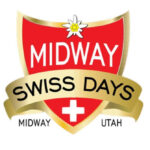Gallstones are a common condition, and while many people have them without experiencing any issues, they can sometimes lead to significant discomfort. When a gallstone blocks a bile duct, it can cause a sudden and intense abdominal pain known as biliary colic. Understanding where this pain occurs and what it feels like is crucial for recognizing potential gallstone problems and seeking timely medical advice.
Understanding Gallstone Pain (Biliary Colic)
Biliary colic is the term for the characteristic pain caused by gallstones. This pain arises when a gallstone temporarily obstructs the flow of bile, usually in the bile ducts. It’s important to recognize the location and nature of this pain to differentiate it from other types of abdominal discomfort.
Location of Gallstone Pain
The pain from gallstones is typically felt in the upper abdomen. You might experience it in these areas:
- Central Abdomen: Many people describe the pain as being located in the middle of their abdomen, often above the belly button.
- Right Upper Abdomen: A more specific location is just under the ribs on your right side. This is because the gallbladder is situated in the upper right portion of your abdomen. The pain often starts here and can radiate outwards.
- Referred Pain: The pain can spread from the right upper abdomen to your side or even to your right shoulder blade. This is known as referred pain, where pain is felt in a location different from its origin.
It’s important to note that the pain is internal and abdominal, not on the skin surface.
Characteristics of Gallstone Pain
Gallstone pain has distinct characteristics that can help identify it:
- Sudden and Severe: The onset of biliary colic is usually sudden and the pain is often described as severe or intense. It can be quite alarming when it strikes.
- Constant Ache: Unlike crampy pain that comes and goes, gallstone pain is typically constant. It’s a persistent ache rather than intermittent spasms.
- Not Relieved by Basic Measures: The pain is not alleviated by actions that might relieve other types of abdominal discomfort, such as going to the toilet, passing gas, or vomiting. This lack of relief can be a key indicator.
Triggers and Duration
While gallstone pain can occur at any time, certain factors can trigger it:
- Fatty Foods: Eating fatty meals is a well-known trigger for gallstone pain. Fat stimulates the gallbladder to release bile, and this can cause a gallstone to move and potentially block a duct. However, pain can also happen regardless of recent food intake.
- Time of Day: Gallstone pain can occur at any time, including waking you up during the night. This unpredictability can be disruptive.
- Duration: An episode of biliary colic typically lasts from 1 to 5 hours. However, it can sometimes be shorter, lasting only a few minutes. The duration can vary from person to person and episode to episode.
- Frequency: Biliary colic episodes are not usually frequent. After one episode, you might go weeks or even months before experiencing another one.
Associated Symptoms
In addition to pain, some people experiencing biliary colic may also have:
- Sweating: Excessive sweating can accompany the intense pain.
- Nausea and Vomiting: Feeling sick to your stomach or actually vomiting is also common during a gallstone pain episode.
When gallstones only cause episodes of biliary colic without further complications, it is referred to as uncomplicated gallstone disease.
Other Symptoms of Gallstones: When Complications Arise
While biliary colic itself is not life-threatening, gallstones can sometimes lead to more serious problems if they cause prolonged blockages or move into other parts of the digestive system. If complications develop, you might experience more worrying symptoms:
- Persistent Pain: Pain that lasts longer and is more unremitting than typical biliary colic.
- High Temperature (Fever): This indicates a possible infection.
- Rapid Heartbeat: An elevated heart rate can be a sign of the body’s stress response to infection or inflammation.
- Jaundice: Yellowing of the skin and the whites of the eyes. This occurs when bile builds up in the bloodstream.
- Itchy Skin: Jaundice can also cause itchy skin.
- Diarrhea: Changes in bowel habits, such as diarrhea, can occur.
- Chills or Shivering Attacks: These are also signs of infection.
- Confusion: In severe cases, confusion can develop, indicating a serious condition.
- Loss of Appetite: A general feeling of being unwell can lead to a loss of appetite.
Doctors describe this more serious presentation as complicated gallstone disease. It requires prompt medical attention.
When to Seek Medical Advice for Gallstone Pain
It is essential to know when to seek medical help if you suspect gallstones.
Make a routine appointment with your General Practitioner (GP) if:
- You think you are experiencing biliary colic. Even if the pain subsides, it’s important to get checked out to confirm the diagnosis and discuss management options.
Seek immediate medical advice by contacting your GP urgently, your local out-of-hours service, or NHS 111 if you develop any of the following:
- Jaundice: Yellowing of the skin or eyes is a serious symptom that requires immediate attention.
- Abdominal pain lasting longer than 8 hours: Prolonged pain could indicate a complication.
- High temperature and chills: These are signs of a potential infection, such as cholangitis (bile duct infection).
- Abdominal pain so intense you cannot find a comfortable position: This level of pain suggests a severe issue that needs prompt medical evaluation.
Ignoring severe or persistent symptoms of gallstones can lead to serious complications. Seeking timely medical advice is crucial for proper diagnosis and treatment, ensuring better health outcomes.

